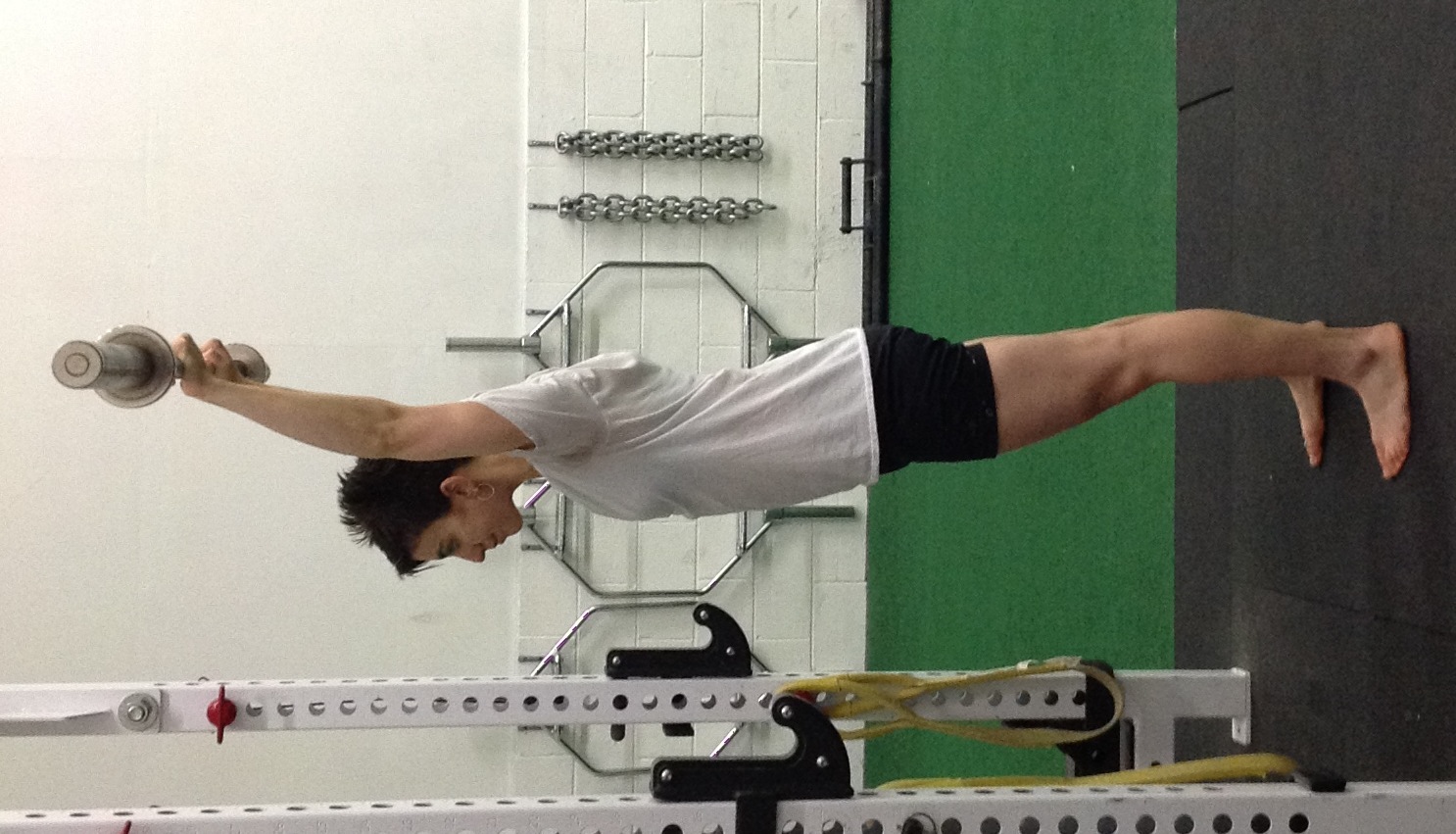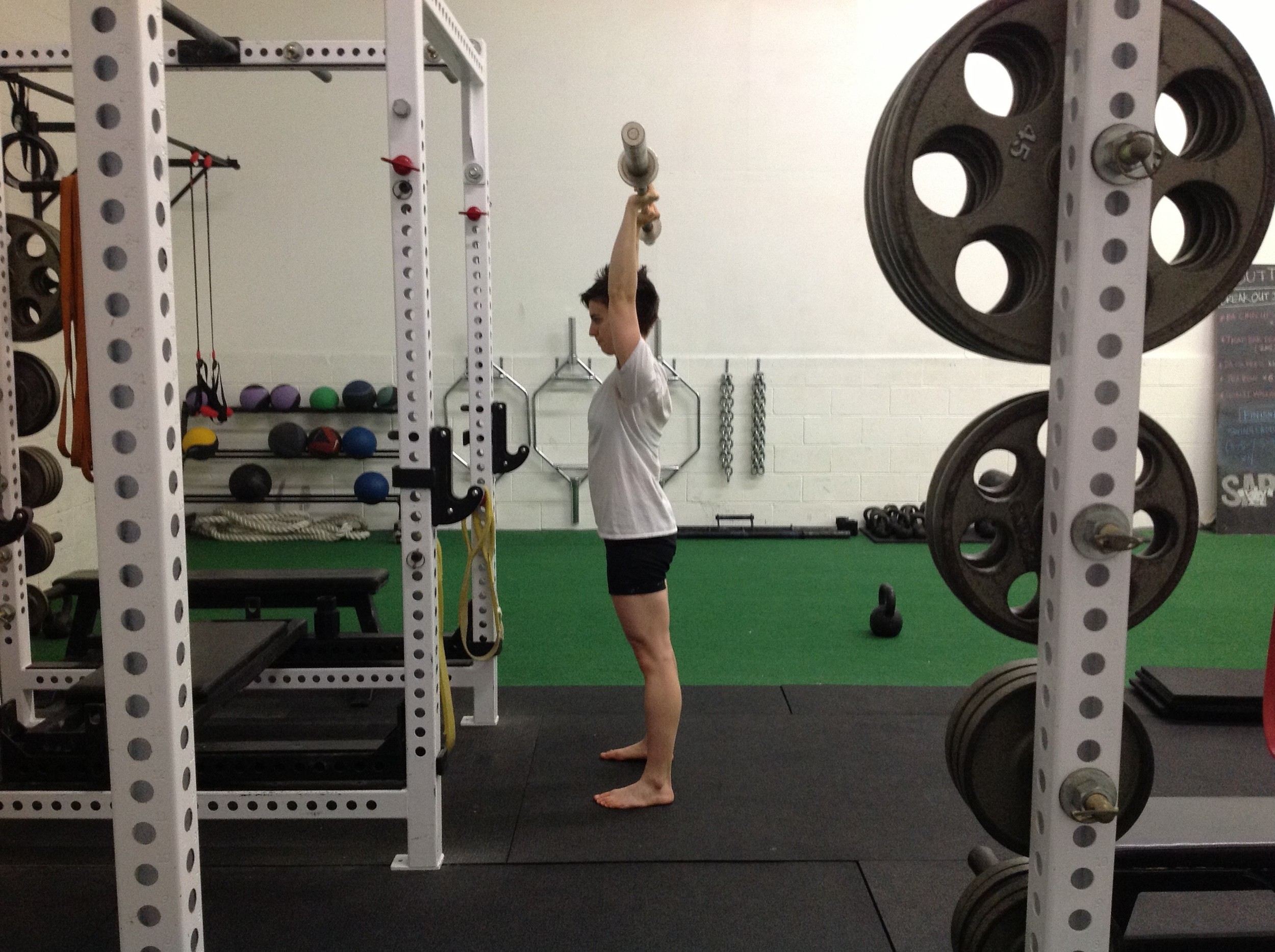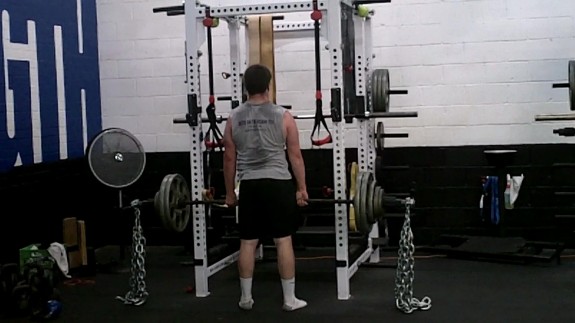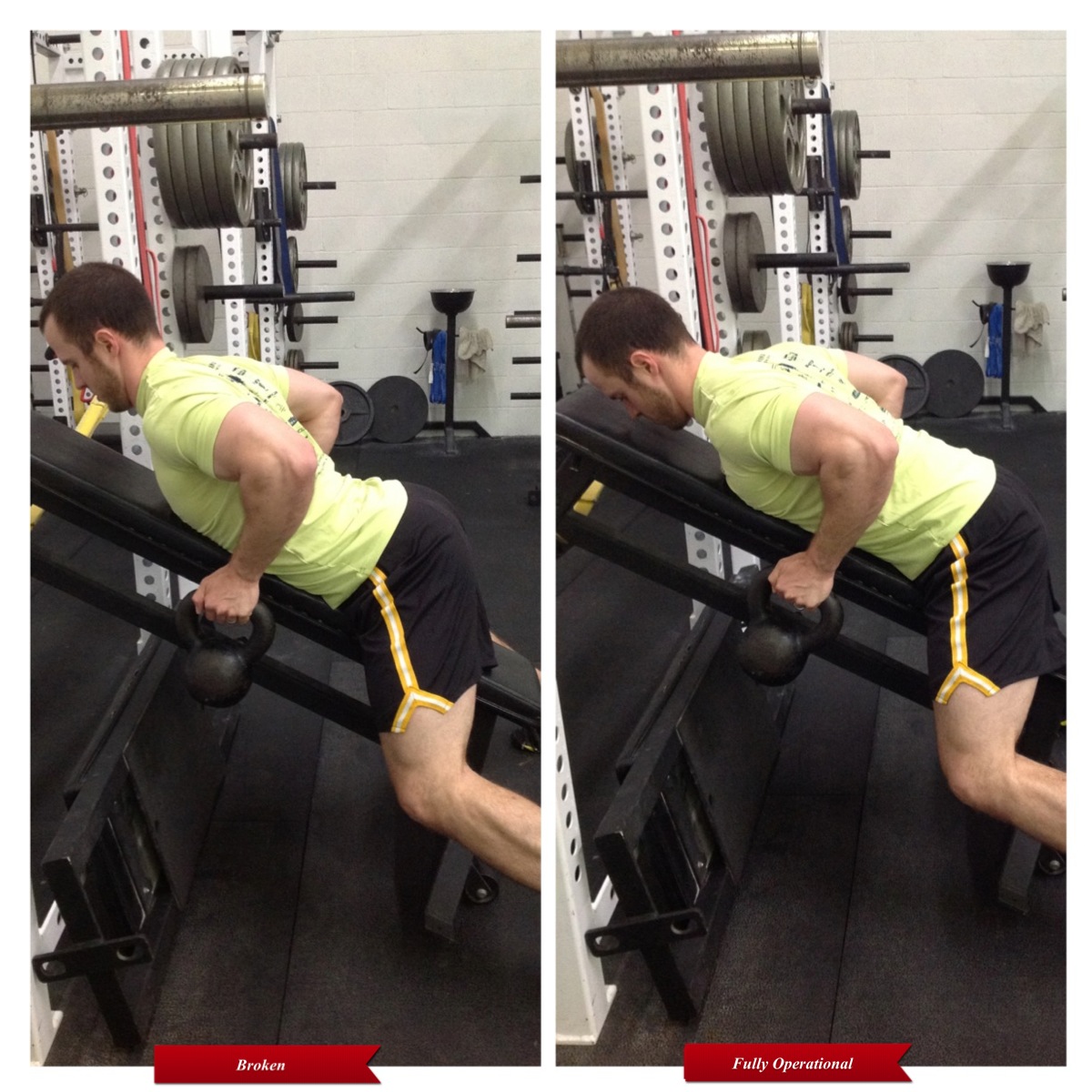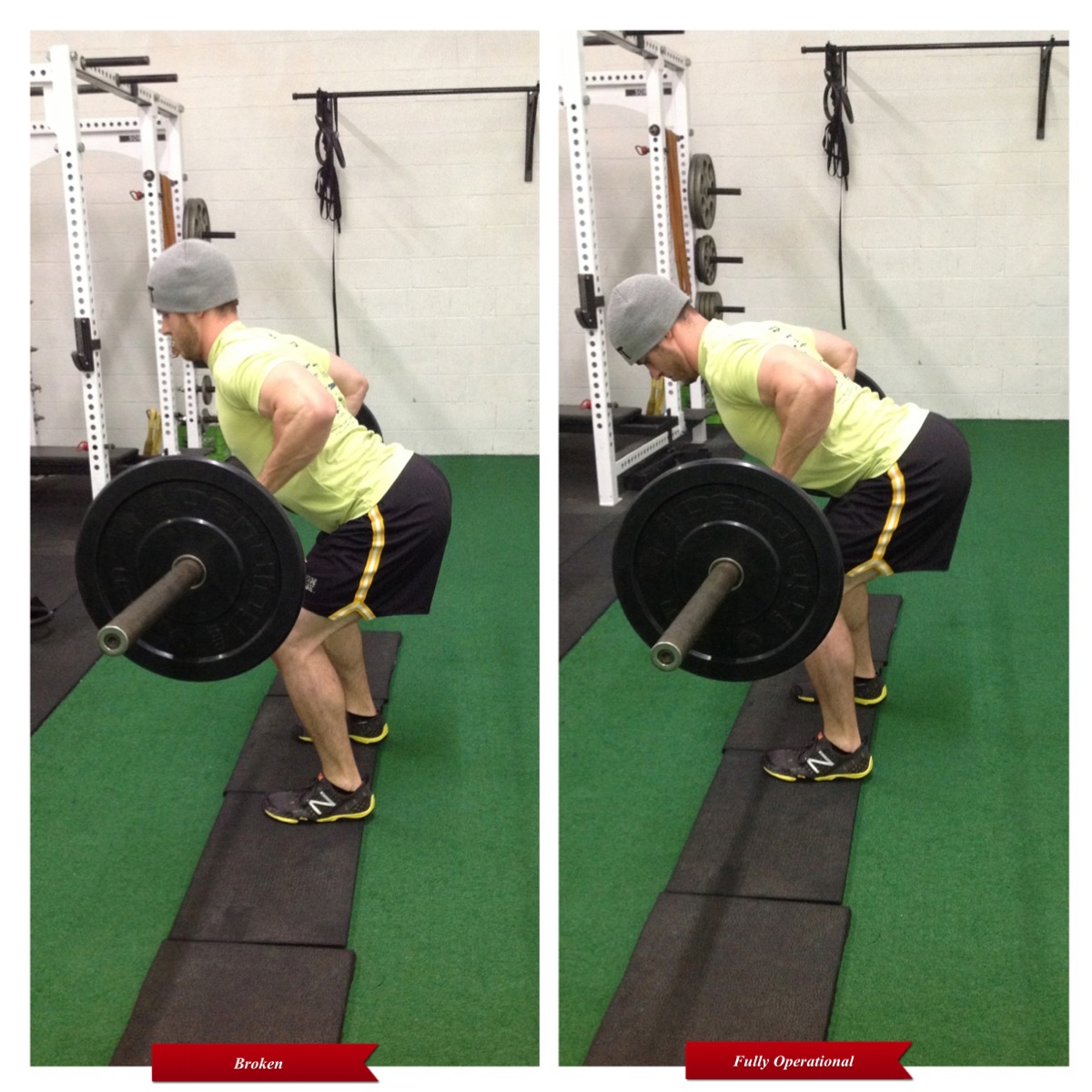No, it is indeed not Friday at the time of posting this....decided to do this round a day early.
1. Coaching the Overhead Press
There's something intrinsically satisfying about pressing a heavy weight overhead, not to mention the host of benefits it provides, provided you don't butcher it. I actually did a little Q & A on overhead pressing HERE, for those interested. Moving on...
A cue often given in the overhead press is to "push the head and body through" at the top, the goal here being to prevent the bar from drifting too far away from the body. However, I often see people woefully abuse this cue to the extreme and jut their head way too far out at the top, slipping into gross extension, especially at the cervical spine:
Those of us coaches in the crowd often experience profuse bleeding of the cornea when we see people perform a pushup with the oh-so-prolific forward head posture, so why is does it all of a sudden become a different ball game when we press vertical instead of horizontal? You can see, if I flip the above picture of Kelsey 90 degrees, where she would be in the horizontal plane:
Not a pretty "pushup" position, right?
Yes, you do want to prevent the bar drifting away from the midline of the body, but be sure to keep the head neutral - aka a packed neck - as you finish the lift at the top:
When we jut the head forward, all we essentially wind up doing is cranking on that levator scapulae - thus cementing a downward scapular rotation pattern (not ideal) - and substituting forward head posture for actual scapular upward rotation and posterior tilt, anterior core stability, shoulder flexion, and T-Spine extension.
Translation: Shoving the head forward turns you into a walking ball of fail.
Keep those glutes tight, abs engaged, ribcage down, and ideally you'll want a vertical line going through the bar, ears, and midfoot when at the top of the press.
2. High Frequency Deadlifting
Back in 2012 I wrote a post called A Little Deadlift Experiment, Part 1, in which I briefly discussed a high-frequency deadlifting plan I used to add 40 pounds to my deadlift in 4 weeks. I never ended up writing Part 2 (yes, fail on my part), but I received a number of questions, both on the blog and through email, on how it ended up.
Well, I actually only ended up doing it for another month, but I did add another ten pounds to my total during that month. Excellent. I stopped it due to the pursuit of a few other goals, but I did want to share that I've "experimented" with the program on other people and it has worked wonders.
Mark - one of my buddies, and a physical therapist - called me up last year year telling me he made a bet with his supervisor that he could eventually deadlift over 400lbs. The kicker? He only had about 4 months to do it, his deadlift 1RM was sitting right around 300lbs, and he made the dreaded Alpo Bet, a la Dan John. So he called me in hopes I could help him add 100lbs to his deadlift in a matter of a few months.
Great.
After berating him on the phone for making me responsible to help him win an absurd bet he never should have made, I gave him the very deadlift program I used.
The result? His deadlift shot up from 300lbs to 435lbs in a matter of five training cycles, leaving him the winner of the bet and relieving him from eating a can of Alpo in front of his supervisor. What?!
Keep in mind, he had over three years of solid lifting experience under his belt, so these weren't newbie gains, either.
Note: All the credit goes to Mark on this one. He worked his tail off - despite the fact that he has a very demanding schedule and was undergoing some significant "life" changes - and trusted me every step of the way with the seemingly asinine program I gave him.
I'm not going to share the program here yet though, as I may end up using it for future article or online program. Patience, patience....
3. Tying the Perfect Tie
This one's for you gents in the crowd.
Maybe I'm a bit of an anomaly here, given that I'm fortunate enough to wear t-shirts and athletic shorts to work each day, but getting ready for an event requiring a tie can be exceedingly frustrating. (Yes, you office workers in the crowd, go ahead and shake your heads in reproach, I realize I have it easy.)
Fortunately, Tim Ferriss seems to be an expert at doing any and every random task extraordinarily well, and tying ties is no exception. Here is a quick, extremely useful video on how to tie the perfect tie, every time.
It can take a couple tries, but once you get it, you're golden. Ever since employing this tactic I've been able to boast the best tie in the room at formal events. What what!
I've run out of musings for the time being, hope everyone has a great weekend.


